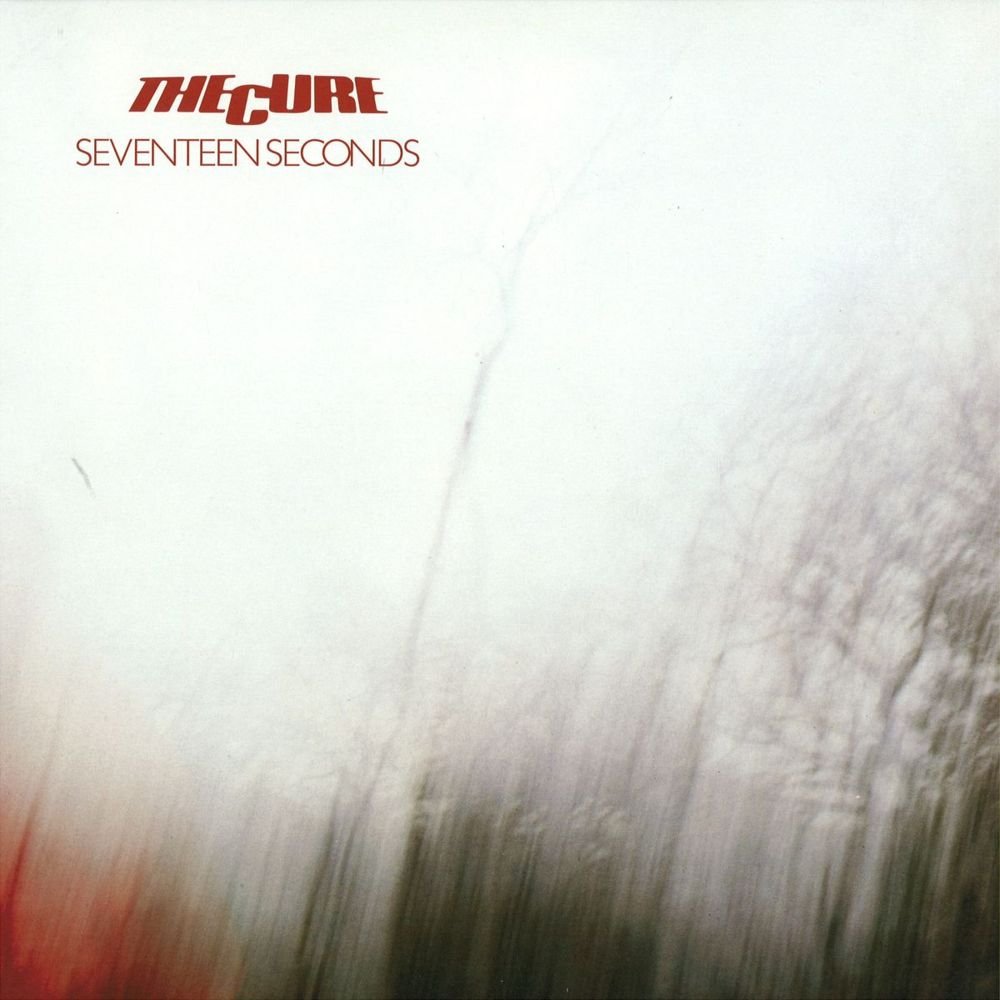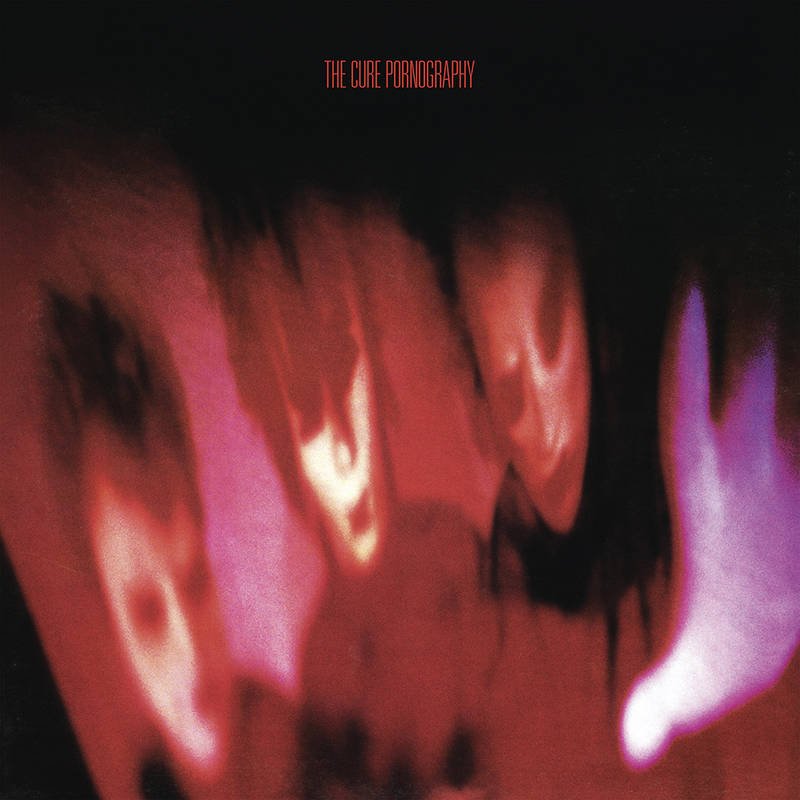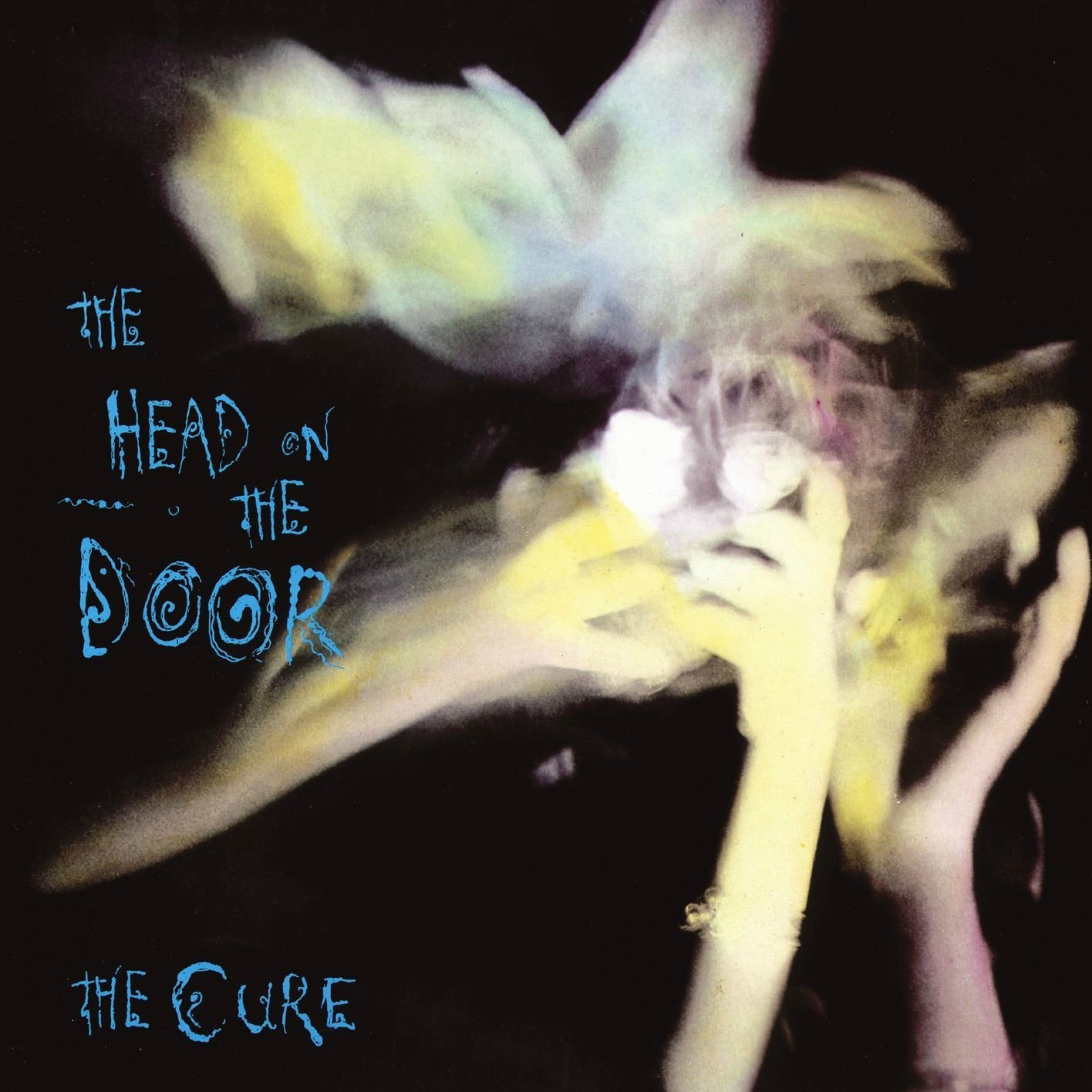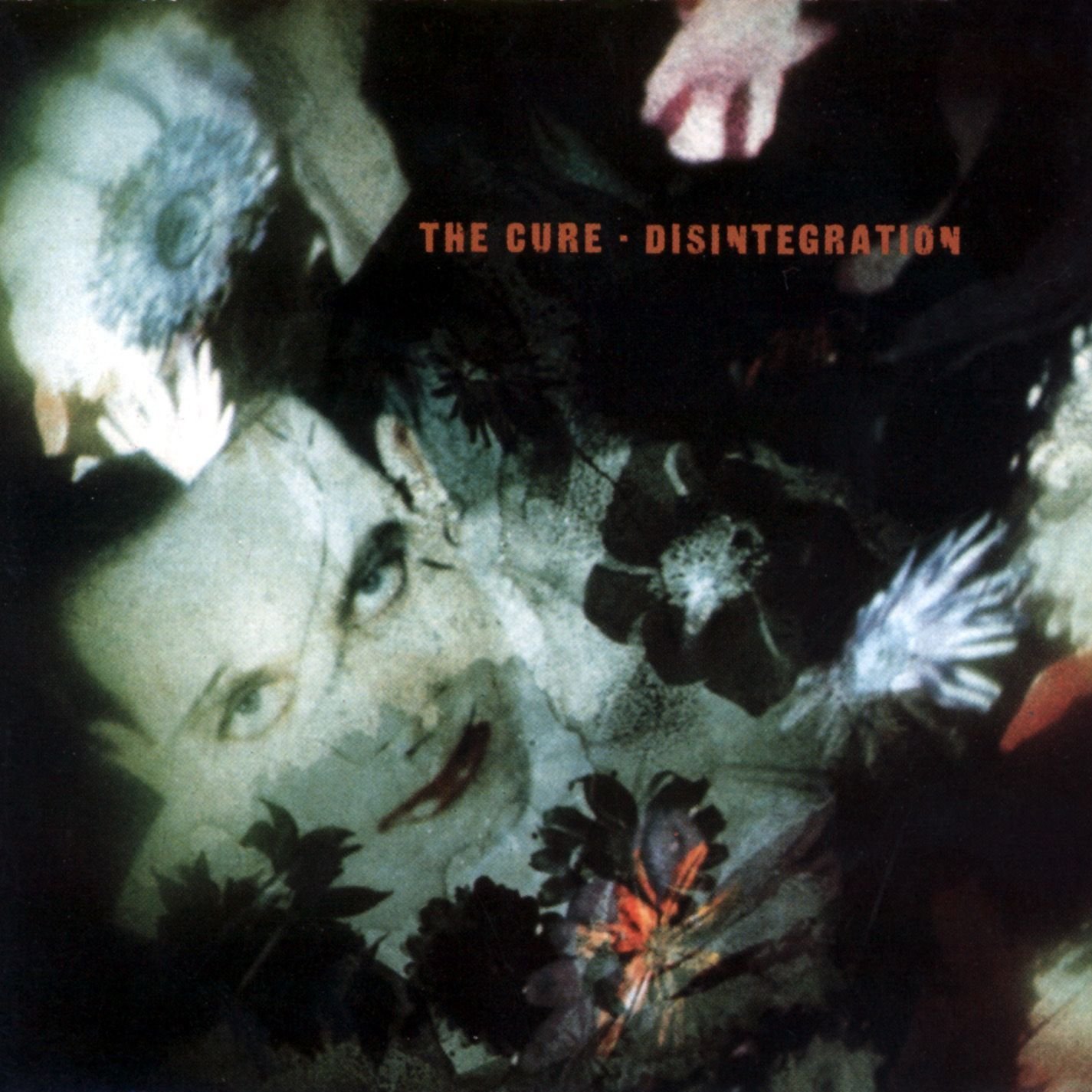Happy 45th Anniversary to The Cure’s debut album Three Imaginary Boys, originally released May 8, 1979.
I’m not embarrassed to admit I was once escorted out of a record store for arguing with an employee about Robert Smith’s voice. And really, there’s nothing to argue. His voice is essential —a definitive element in The Cure’s sound, and in my life. It’s hard to believe we might have been without it.
Smith began his legendary singing career in the fall of 1977, a role he stepped into for Easy Cure (the band that would morph into The Cure) mainly because they couldn’t find anyone suitable. After a handful of failed attempts on the part of others, the 18-year-old Smith rose to the challenge, recalling in The Cure: Ten Imaginary Years, “…We’d already had about four useless frontmen, I thought I couldn’t be any worse so I decided to be the singer.” Until that point, Smith served more of a supporting role, playing guitar, the instrument that captivated him, even as a young boy.
That October and November, Easy Cure recorded their first set of demos at SAV Studios in London, including preliminary versions of “Meathook,” which appears on The Cure’s first album, and first single “Killing an Arab” (which is curiously absent from their debut record). But, Hansa, the German indie label Easy Cure were signed to, didn’t take to the band’s post-punk aesthetic and pestered them to adopt a more traditional rock & roll sound.
By March 1978, the Crawley-based band had grown weary of the back-and-forth. They terminated their relationship with Hansa and tightened their lineup. Two months later, they emerged sharpened and deliberate. On Smith’s insistence, they refined their name, too. Dropping “Easy” from the moniker and inserting “The” created the proper desired effect. And with that, the concise trio—consisting of singer/guitarist Smith, bassist Michael Dempsey and drummer Lol Tolhurst—started The Cure we know and love today.
From the beginning, Smith had a clear sense of what he wanted the band to be and what he wanted them to sound like. He had a rebellious spirit and an original vision, drawing varied inspiration from David Bowie, Nick Drake, Alex Harvey and Jimi Hendrix, to name just a few. And although The Cure were excited to land their next contract with the brand-new Fiction Records in September, creative differences surfaced immediately and frequently.
Fiction was the brainchild of Chris Parry, who had brought success to British label Polydor by signing The Jam and Siouxsie and the Banshees. He’d enjoyed their rise, but wanted to do something fresh, and was immediately taken by The Cure’s demo tape featuring nascent recordings of “10:15 Saturday Night” and “Boys Don’t Cry” (early singles that still delight more than 40 years later). Remembering his first Cure show, Parry relates, “I instantly thought they were going to be very successful. I thought they had a very universal appeal….I thought ‘This is really sharp and incisive and young’.”
Listen to the Album:
Having been the only label rep to show real interest in The Cure, Parry was in a unique position to direct the band—much to Smith’s chagrin. Parry was also well-seasoned as both an artist and business exec in an industry Smith was just starting to learn. And so, the band sometimes hungrily, but often begrudgingly followed Parry’s lead, sneaking into The Jam’s studio afterhours to record their first album, adhering to a demanding gig schedule to build experience and a following, and even injecting a keener sartorial sensibility into their onstage demeanor.
“To me, one of the best things about being in a band was not having to get up in the morning. Getting up to me at that age represented ‘a job’; so if I didn’t have to get up, I wasn’t ever working!” Smith remarked in the liner notes of the 2006 Three Imaginary Boys reissue. Joking aside, The Cure worked tirelessly, diligently paying their dues and playing through strife and sickness. They shared bills with relatively popular acts like Generation X and Joy Division, but also performed less-than-glamorous shows at rowdier clubs with audiences who were neither gracious nor receptive.
However, their efforts during this frenetic period developed noticeable momentum. For one, The Cure earned a revered spot on the Peel Sessions. They also released “Killing an Arab,” which was something of an accomplishment in its own right. Their previous label Hansa had flat out refused to support it, and even Fiction couldn’t release it because Polydor wouldn’t promote it due to its just-before-Christmas release date. So, Parry found a punk/post-punk label called Small Wonder based in London to finally give The Cure their first official release.
At the top of the new year (1979), with the single garnering glowing praise from the UK press, The Cure returned to London’s Morgan Studios (where they’d furtively worked before) to record and mix their debut album. The process was anything but easy. Parry and Smith continuously quarreled over the production style, among other things. So, Parry brought in technician Mike Hedges to help ease tensions.
When Three Imaginary Boys was completed, it was not the album Smith had wanted to make. Everything from the cover art to the track listing to the overall sound flew in the face of what Smith envisioned. And, in those telling moments, one key lesson was eternally learned. The Cure would continue to work with Parry, who after all took a chance on the band when no one else did, but Smith never again relinquished production to another.
Despite Smith’s dissatisfaction with the result, Three Imaginary Boys made for a fairly successful debut, winning laudatory reviews from top British music weeklies and charting amidst the UK’s top 50 albums.
Although I wasn’t there to witness it all firsthand (a girl can dream…), I feel safe saying The Cure stood out from the get-go. Their songs were sparse and unexpected, often transforming blank moments of ennui into colorfully catchy vignettes. “10:15 Saturday Night,” the album opener, smartly mimics the tedium of a dripping kitchen faucet with monotonous drum taps, underscoring teenage angst. The song eventually gives way to a temporary instrumental outburst before reining the nihilist tantrum back in. At the end, Smith whispers, “It’s always the same.” Looking back, it’s a common sentiment in The Cure’s oeuvre, and perfectly placed here in the first song of their first album.
Enjoying this article? Click/tap on the album covers to explore more about The Cure:
The compact gem “Accuracy” follows. Featuring the darkly playful line, “Look into my eyes / We both smile / I could kill you / Without trying / That's accuracy,” the not altogether sinister tune seems to peek perversely behind the veil of intimacy.
The third track, “Grinding Halt,” exudes danceable buoyance, musically opposing its words. While Smith sings of a stopped, quieted world, all I want to do is bounce around. These days, The Cure don’t play much from Three Imaginary Boys live, but this sprightly song is one of the chosen few, and it’s easy to see why.
The plaintive “Another Day” dramatically slows down the pace, offering a more placid view of the stagnant world that permeates the first half of Three Imaginary Boys. Yet, the lyrics are painterly and alliterative. Despite wishing the slow winter’s day away, Smith, even in his youth, couldn’t help but notice the beauty. This underrated song has a way of reliably softening my mood.
“Object” is one of the album’s stranger tracks (and there certainly are a few!). A hollow song satirizing sexist pop, the lyrics make no attempt to sugarcoat blatant lust with genuine emotion or affection. While an underlying sense of detachment seeps through the record, we’re still privy to little windows of yearning that suggest there’s something more. Here though, the division between soul and body seems decisively—and maybe even frighteningly—complete.
Taking its cue from film noir, “Subway Song” is a mysterious track with a screaming secret. Smith’s description, revealing of his imaginative personality, still makes me smile: “I had this habit of telling people I knew someone who’d been murdered in a subway. It wasn’t true at all.” A little poetic liberty never hurt anyone, right?
A cover of Jimi Hendrix’s “Foxy Lady” jostles in next, and it’s a true disgrace. It’s the first and only time an unoriginal Cure song made it on to a Cure record. And, with vocals by Dempsey, it’s the only time Smith isn’t singing on a Cure record (utter blasphemy, I say!). Smith was upset by Parry’s inclusion of this song, which was only on the roster because the band warmed up with it during rehearsals. Musically, I can hear traces of “Primary,” a single which would appear on The Cure’s third album, Faith (1981), so, if pushed, I could claim one redeeming factor. However, I’m quite sure “Primary” would have materialized even if this huge misstep never did.
Subconsciously, Parry must have known the error of his “Foxy Lady” ways and attempted to course-correct with the subsequent placement of “Meathook,” the silly leftover from Early Cure Hansa days. The impromptu lyrics are throwaway, conflating a butcher with a lover. But, the real treat here is Smith’s coy delivery. Full of syllabic play and whirly wonder, the song shows Smith throwing his voice a bit and taking us on a carefree wander.
“So What” is likely another song that wouldn’t have made the album if Smith had any say in the matter. Or, if Smith had selected it for the album, he probably would have salvaged it. The song intersperses words from an ad on a package of sugar with poignant ones about lost love, but the latter’s meaning gets muddled, undoubtedly by the same heavy inebriation that led to the singing of the cake icing and decorating set in the first place.
Thankfully, despite the wobbliness midway through, the record more or less ends on a strong note.
“Fire in Cairo” is an absolute highlight and my unequivocal favorite from Three Imaginary Boys. Lyrically, it’s the most evocative, an early taste of Smith’s signature style that he’d soon come to master (“Slowly fading blue, the eastern hollows / Catch the dying sun, the nighttime follows / Silence and black / Mirror pool / Mirrors a lonely place where I meet you / See your head in the fading light / And through the dark / Your eyes shine bright / And burn like fire, burn like fire in Cairo”). The vocal delivery is beyond clever, too, with Smith mellifluously spelling out the words (“F-I-R-E I-N C-A-I-R-O”) to darling effect. I was fortunate enough to see “Fire in Cairo” performed live during my first-ever Cure tour in 1996, and suffice to say, I’ll forever be enamored.
The harsh antithesis “It’s Not You” follows, illustrating another fledgling trend. While many emotions in the realm of The Cure are swathed in misty metaphor, open to endless interpretation, songs relating to rancor and ire hit immediately. “It’s Not You” is the first example of this direct expression of repulsion.
Technically, the twangy instrumental outlier “The Weedy Burton” offers the final sign-off in Three Imaginary Boys, an homage of sorts to Bert Weedon, author of the instructional book Play in a Day, which Smith had studied while learning to play his older brother’s guitar. But, the more meaningful closer is the title track, “Three Imaginary Boys,” a quintessentially Cure song in every way. Based on a dream Smith once had, the song executes charmingly, with just the right mix of fear, earnestness and hope, suggesting a promising future for the band, despite the inconsistencies.
On the whole, however, Three Imaginary Boys isn’t a direct manifestation of Smith’s vision and it shows. As an album, it lacks focus and feels more like a string of EPs rather than one LP. But, in some ways, it may have been a blessing in disguise. Smith was new to the music world and may have made mistakes regardless (he is human, after all). We’ll never know what could have been, but what we did get was enough to pique curiosity and Smith capably took it from there.
He sums it up nicely, “Once we’d recorded ‘TIB,’ got it out of the way in a sense, I felt The Cure was about to start for real.”
LISTEN:
Editor's note: this anniversary tribute was originally published in 2019 and has since been edited for accuracy and timeliness.





